Publisher’s
Op-Ed: Git ‘R Done, Mr. President Pg. 3
Obituary: Ronald Clark Gempel Pg. 12


Publisher’s
Op-Ed: Git ‘R Done, Mr. President Pg. 3
Obituary: Ronald Clark Gempel Pg. 12

 BY ZOE TRIBUR
BY ZOE TRIBUR
Last December, the San Francisco Unified School District notified families that it was preparing a phased reopening of in-person learning, starting on January 25th. Different schools and groups would be invited back to in-person learning in tiers, reflecting specific schools and grades, such as younger and Special Education
students, with tier assignments subject to change. SFUSD quickly set this plan aside, replaced by a new one, “Phase 2a,” with a tentative February 8 start date for the first tier. Many residents, bewildered by the District’s inability to bring students back to their campuses, expect that date to pass as well without a return to hands-on learning.
SCHOOLS continues on page 10
Since the public health crisis began last year demand for furry friends has exploded. Thousands of people have signed up to foster an animal at the San Francisco Society for Prevention of Cruelty to Animals (SF SPCA). Muttville Senior Dog Rescue and other animal rehoming agencies have been deluged with applicants.
This outpouring of pet love will ultimately lead to the need to cope with the animal’s remains once it dies.
After a dog or cat passes its body can be handled in various ways. Humans unable to bury their animal on private property can request disposal by San Francisco Animal Care and Control (ACC), ask their veterinarian to deal with the corpse, or direct the deceased to a suitable cemetery or crematory, such as Pet’s Rest, in Colma, or Bubbling Well, in Napa.
the COVID-19 pandemic. For pickup, the body should be placed outside the residence. For drop-off, the corpse should be positioned in front of ACC’s 15th Street facility on a bench, notifying ACC of the arrival through the

entrance intercom.
The bereaved can make an appointment with ACC to bring in the body or ask that an officer pick it up. Disposal costs are $23; pickup is $60, said Martha DeLeon, ACC shelter service representative. If the animal is a stray its location can be conveyed to ACC or the corpse delivered to thev facility.
According to DeLeon, precautionary measures should be taken during
Dogpatch, Mission Bay and Potrero Hill are served by two San Francisco Police Department districts. The Southern and Bayview districts are located east of Highway 101 and south of Mission Street, an area that experienced a 45 percent decline in reported rapes, and a 40 percent decrease in claims of human trafficking last year.
Larceny theft – the violent taking of property, such as bikes and motor vehicle parts – as well as embezzlement and forgery dipped by 40 percent in 2020, with 4,180 acts recorded relative to 6,971 in 2019.
These numbers continued the 2018 to 2019 trend, which saw an 84 percent decrease in human-trafficking and 45 percent decline in rapes.
There were 49 rape reports in 2020, almost half the 89 accounts in 2019. Just three assertions of human trafficking were made in 2020, compared to five in 2019.
“In regards to the decrease of incidents of rape and human trafficking as well as the larcenies…we believe that COVID-19 had the biggest impact on these activities,” said SFPD Officer Robert Rueca. “We did not enact any new programs for 2020 that tackled these issues differently. We are experiencing more activity of human trafficking behind closed doors versus seeing the public presence out in our streets.”
Robberies – taking or attempting to take anything of value by force or threat of force or violence and/or by putting the victim at fear – declined by 26 percent in 2020, with 517 reported
compared to 697 in 2019.
In 2020 motor vehicle theft jumped by almost 20 percent, compared to a .2 percent rise the previous year. Burglary – breaking in and entering or forced entry – rose by 22 percent, negating the 18 percent decline in 2019.
“Our focus in 2020 has been on the increase in burglaries,” said Rueca. “Our priority has also been in reducing violent crimes such as homicides, shootings, and robberies.”
Reports of arson – the willful or malicious burning or attempt to burn, with or without intent to defraud any personal property – increased by 22.4 percent, with 82 recorded acts.
Overall crime declined by 23 percent in the two districts, following a 12 percent reduction in 2019.
It’s illegal to bury, leave, or dispose of a deceased pet in a public park or public waters, with a $250 to $1,000 fine for a first conviction.
Those with access to private property can use it for burials. An animal that died of a contagious or infectious disease must be interred at least 500 feet away from any residences. An animal grave should be three to four feet deep, to reduce health risks and the chance that scavengers or rain will disturb it. Water, electric, and gas lines should be avoided.
Lap of Love offers a free national pet loss hotline. SF SPCA hosts a complimentary grief support group facilitated by Shaina Madfes and Sharleen Phillips, volunteers who are registered associate marriage and family therapists. Madfes and Phillips facilitate the group, but it isn’t therapy; it’s a space to share experiences about an animal’s passing. The group currently meets on Zoom.
“The support group provides space for folks to share whatever feels most helpful, memories of animal companions, experiences with loss and death, and both challenges and successes with coping with grief,” said Madfes.
Participants are invited to distribute photographs and videos of their animals.
“Adults of all ages residing in
The virus-fog that’s enveloped the world will slowly dissipate, cleared away by its inability to reach masked, sheltered, and increasingly inoculated or already-infected recruits. As we emerge from our seclusion, like so many gophers looking for our shadows, what will we see? What do we want to see?
Many of us will surface from near house arrest suffering from depression, anxiety, and post-traumatic stress disorder (PTSD). Children especially, robbed of more than a year of schoolbased education and interactions, have been scarred by isolation and uncertainty. Unlike the lackluster response during the pandemic, the City should open its arms to give kids a long, warm, unconditional hug. As called on by the
San Francisco Board of Supervisors, billions of philanthropic and taxpayer dollars should be raised to help schools address the academic and emotional damage done by the pandemic. A volunteer core of therapists should be raised, dedicated to assisting with school curriculum development and onsite counseling. All child-oriented institutions – museums, camps, the Zoo – should be freely accessible for as long as possible, with special exhibits and activities that speak to issues associated with PTSD and newly expanded educational gaps. Kids’ needs should come first all the time, everywhere, now, and forever.
PUBLISHER’S VIEW continues on page 14
Walton Board President
District 10 Supervisor Shamann
Walton was installed as San Francisco Board of Supervisors president last month, becoming City Hall’s second most powerful politician. Walton was elected to the Board in 2018 to represent Bayview-Hunters Point, Dogpatch and Potrero Hill after serving eight years as the executive director of Young Community Developers, a nonprofit that offers youth job training. Walton is aligned with the board’s progressive wing. Supervisor Hillary Ronen , a contender for board president two years ago, praised him as the right person “to lead us through the end of this pandemic and into recovery. He is clear about why he wants a leadership role; to assist those that are suffering the most. He is brave and visionary and always operates with a profound respect for everyone he works with.” Supervisor Matt Haney, who represents the Tenderloin and South-of-Market, said Walton will “stand up for our vulnerable residents, and help steer the board in a productive
solutions-oriented manner.”
Cohen Police Commission President
Malia Cohen, who preceded Walton as District 10 Supervisor, was elected San Francisco Police Commission president last month. Commissioner Cindy Elias was selected as vice president. Cohen’s accidence follows the December resignation of former Commission president Damali Taylor. Cohen is the newest Commission member, having joined in August, nominated by Mayor London Breed and unanimously approved by the Board of Supervisors. She also serves on the state Board of Equalization , which oversees tax administration in California.
In January, the San Francisco Metropolitan Transit Agency (SFMTA)’s Board of Directors approved temporary emergency transit lanes on Fourth
SHORT CUTS continues on page 14
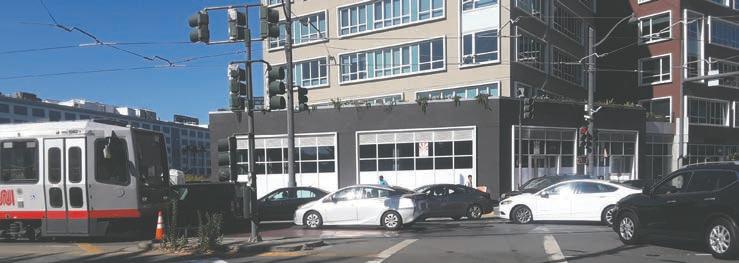

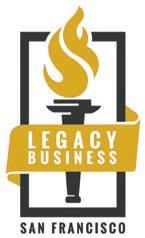

While helping a friend build a retaining wall in his backyard to prevent water from seeping into the basement, Donald J. Trump’s slogans began to make sense. “Build the Wall!” Yes, I want that wall built. “Drain the Swamp!” Exactly, that’s what we’re doing.
These common affairs of humankind, necessary behaviors to ensure survival throughout the millennia of civilization—diverting water, building fortifications— are essential and profitable. I was engaging in the daily task of countless Americans… and Brazilians, and Filipinos, and any number of people the world over who perform manual labor to alter the physical reality around them. Trump’s slogans are appealing on a visceral level. Everyday actions are
to the View through SF Community Power; consider including your favorite newspaper in your trust.
Correspondence to:
296 Liberty Street, San Francisco 94114
acknowledged and celebrated.
Throughout history effective leaders have ensured the survival and prosperity of their societies through mastery of the arts of water control and fortification construction, as well as marshaling people to concerted effort. China’s legendary first emperor, Yu the Great, was famed for his flood control abilities, being able to tame the unpredictable and frequently fatal bursts of a river-based society.
Biden would do well to learn the ways of Yu, and Trump, adopting the slogan, “Git ‘R Done.” Things need doing. The slogan acknowledges this as self-evident; the doing as good. Getting it done is positive. It implies movement, progress, and a level of excited enthusiasm brought to bear against perhaps unpleasant, but necessary, tasks.
In this rallying cry for the country, the R – let it not be said that Biden is only braying to the mob – may be understood as ‘X’ in an equation where R equals whatever the objective of the moment may be. Replace ‘R’ with ‘Coronavirus’ -- “Git Coronavirus Done!” – or with ‘Iran’-- “Git Iran Done!” and suddenly an appealing, if not rational, potential action emerges.
In the course of daily life there are things that need to be done; getting them done is seen as good. There’s plenty that Joseph R. Biden needs to do. He’ll need to marshal all his available resources if they’re to be done. Let Biden not neglect the help of half the country to get R done.
In December, the San Francisco Municipal Transportation Agency (SFMTA) identified three possible developers to rebuild the Potrero Bus Yard: Potrero Mission Community Partners, Potrero Neighborhood Collective, and Potrero Yard Community Partners. The three competitors will submit their final proposals in July, with a winner chosen by the end of summer.
The selected developer will construct a 575-unit residential housing complex, at least half of which’ll be affordable. In addition, a two-story garage and maintenance facility will be replaced with a three-story structure that’ll serve the same function, but for a fleet with a higher percentage of electric vehicles.
The Yard is located on 4.4 acres at Bryant and Mariposa streets, across from Franklin Square Playground. It’s the first municipal property slated to be improved as part of SFMTA’s multiyear, $1.2 billion Building Progress Program, under which the Agency’s aging transportation system is being modernized. The housing complex to be built at the site reflects a unique approach to leveraging public property to host residential uses. The project is presently undergoing environmental review led by the San Francisco Planning Department.
Challenges for the competing developers include providing a substantial amount of affordable housing and proposing means for Muni employees to get to the Yard, by identifying nearby parking possibilities, creating a shuttle, or other travel modes. Residents in the area have discussed the potential of installing a protected pedestrian path across 17th Street, to allow Yard residents safer access to Franklin Square Park, particularly as bus egress and ingress will likely continue to be located on Mariposa Street.
District 10 Supervisor Shamann
Walton wants more than half the housing to be reasonably priced. “In our District, affordability is important. In addition, folks who build in District 10 should get an opportunity to work in projects in the neighborhood. I’m looking for development teams to provide a way for people who know, understand, and live here to build the housing,” said Walton.
According to Walton, workforce stability is enhanced when a community member is able to state, “I built that. I played a role in that.” Walton added, “Helping build the Yard will solidify residents’ connections to it.”
Roger Marenco, president of Transportation Workers Union Local 250A, which represents Muni workers,
The last several months have brought us all some challenging times both personally and professionally. My company and I have readjusted to the "new normal" and I can now offer an updated Virtual Real Estate Marketing plan with the following:
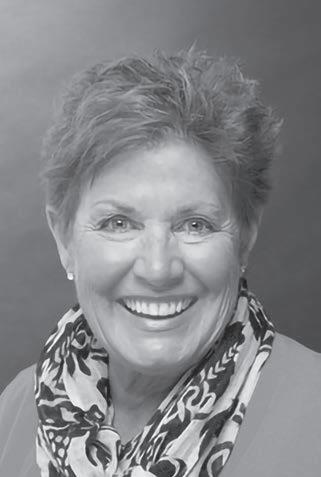


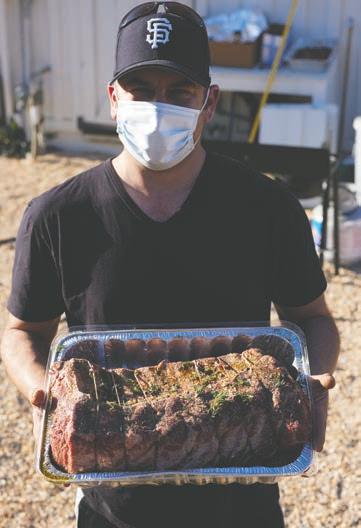 BY REBEKAH MOAN
BY REBEKAH MOAN
Before COVID-19 hit, Alex Pavloff, a fourth generation Potrero Hill resident, threw large cookouts with his family on Connecticut Street, hosting upwards of 100 people. That stopped due to the pandemic, but Pavloff continued to feel the urge to feed his friends and family. Pavloff’s Farm to City Meat Service was born from that impulse.
Though raised in San Francisco, agriculture is in Pavloff’s blood. His maternal grandfather cultivated asparagus and tomatoes in Stockton,
raising animals to feed his family and friends. Pavloff decided to go into farming after building a farmhouse in Tomales for Hill residents David Jablons and Tamara Hicks, who own Toluma Farms & Tomales Farmstead Creamery, as well as Daily Driver in Dogpatch.
“When I went up there, I found it was kind of cool that there were people my own age (early 20s) that had animals and farms,” he told the View “It sparked my interest.”
Years later, Pavloff signed a longterm lease on land in Petaluma that’d been used for organic farming for the last 100 years. He began raising Dorset lambs and Angus cattle, dubbing his ranch Agnello Farms, Italian for lamb, paying homage to Pavloff’s heritage. He slowly built his operations over the past five years, feeding his friends and family with meat that’s humanely raised, hormone-free, and organically pastured.
“I’ve always been a red meat eater and have cared about the quality of the meat I’m eating,” he said. “I like to feed people around me with high-quality product.”
Pavloff has now launched Farm to City Meat Service. Similar to other food and drink subscriptions, customers can supplement and modify their boxes according to their needs. In addition to a wide array of 65-day aged
AGNELLO FARMS continues on page 15

Proposition A, a bond measure passed by voters in November, includes $10 million to renovate Jackson Park. It’ll be the first time since 1947 that the commons will receive bond monies from the City, according to Friends of Jackson Park Executive Director Jude Deckenbach.
According to Deckenbach, to remake one of the City’s oldest parks into something fully satisfactory will require upwards of $30 million in investment. In addition to bond funds,
roughly $17 million will come from impact fees collected from Potrero Hill developers. Where the remaining monies will come from is unknown; it’s an inopportune time to launch a fundraising campaign, Deckenbach said.
It may be years before the park is renovated. In addition to fundraising, park designs must be approved by the San Francisco Recreation and Parks Department, with input from the San Francisco Arts Commission and San Francisco Planning Departments Historical Preservation staff.




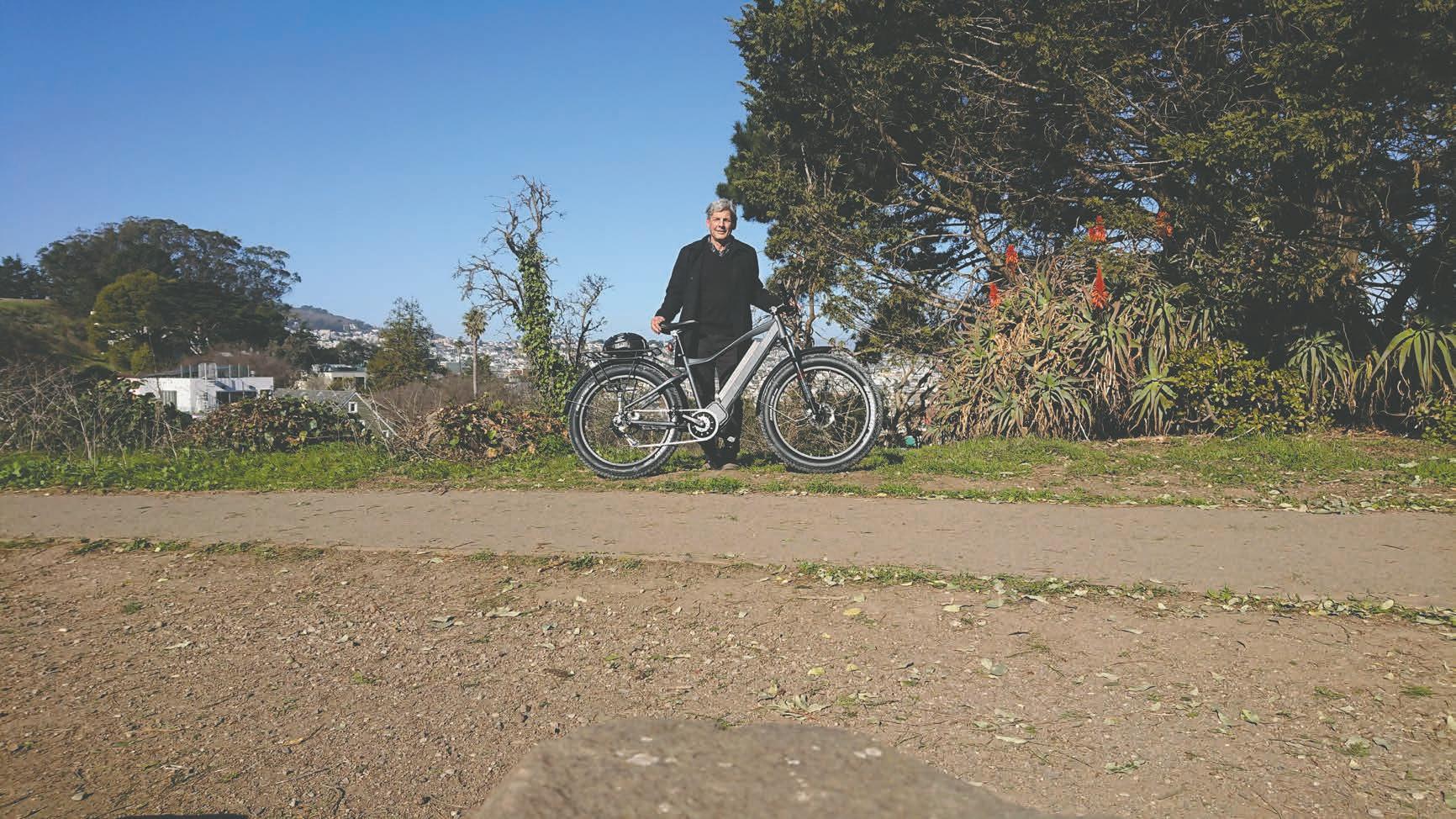

Life changed dramatically in the last year and real estate was no exception. In response to the COVID pandemic, homes can only be shown by appointment. Nonetheless, demand for single family homes has remained healthy as buyers seek larger spaces for working and schooling at home.
The average sales price for a home on Potrero Hill last year was $2,026,877.
you’d like a free report on the value of your home, call Tim Johnson at 415-710-9000.

tim@timjohnsonSF.com www.timjohnsonSF.com
DRE
During this elongated shut-in season, advice on good television shows has become as valuable as stock tips, or insights into the best public elementary schools to send a rising kindergartener.
Recycling past favorites is one strategy. Re-watching decades-old The Simpsons episodes – the title of this article comes from “Treehouse of Horror V” – is a fine palette cleanser before, during, or after any stay-at-home activity. If you’re sufficiently bored, over the age of 50, feeling nostalgic, and in need of a politically-correct group to laugh at, cozying up to The Beverly Hillbillies, which aired its finale in 1971, could be just the ticket. Bookend that with newcomer Ramy – a Portnoy’s Complaint -style sitcom featuring a Muslim instead of a Jew.
Better yet are these fine series:
Criminal Minds. With 15 seasons on offer, this procedural provides the ease of near-mindless spectating as a parade of wicked humans are ultimately laid low by a squad of Federal Bureau of Investigation profilers. It’s reliable comfort food, if you take comfort in believing that loner-style evil is afoot, but will always be tripped up by reliable, eccentric, fundamentally flawed, lovable G-Wo/Men (Netflix).
Murder on Middle Beach. Madison Hamburg’s quest to solve his mother’s murder while discovering who she really was is made especially watchable by the young filmmaker’s steadily increasing skills with his craft. You’ll end up rooting for Hamburg as a son, member of an oddball family, and talented documentarian (HBO).
Rick and Morty . The cartoon adventures of a couple of wild and crazy guys in space. Featuring awesome animation, richly complex sciency storylines, and laugh-out-loud humor, this series is like a delicious chicken
mole. If the chicken lived on the planet Gargantua and ate explosive neon worms that, once through the digestive system, turned into multi-headed peacocks. Which Rick then ate. With a delicious mole. “The Old Man and the Seat” is a strangely touching ode to friendship, and the need for privacy while pooping (Hulu).
Tarantula. This animated series follows Echo Johnson, a tattoo artist at the Tierra Chula Resident Hotel, known as the Tarantula, located in Los Palicios, California. Like The Office, the show’s magic is in creating a posse of credible characters, mostly amiable losers, each with a compelling backstory, that forge wobbly relationships with one another. It’s only one season, which is a bit of a bittersweet bummer, a feeling fully in keeping with Tarantula’s tone (Hulu).
Valley of Tears. Though not as flavorful as Fauda, this Israeli series ably captures the tension and terror caused by the unexpected though completely predictable 1973 Yom Kippur War. It follows a group of soldiers – and one aging hipster dad – as they stumble through and eventually largely triumph over Syrian forces. A dash of Sephardic-Ashkenazi conflict is thrown in, which helps humanize both sides of the battling forces. A must watch in Hebrew with subtitles, as the dubbing is atrocious (HBO Max).
The Wilds. Nine teenage girls – a veritable jury of peers – trapped on a desert island, each with a powerful past lurking just below their generally acne-free skin. To paraphrase one of them, the drama isn’t so much what happens on the island – though there’s plenty of that – as the baggage the girls bring to it. A strong cast of newbies and keenly crafted portrayal of authentic issues facing girls on the cusp of becoming women overcome the cringy plot device in which the entire enterprise is wrapped (Amazon Prime).

is concerned by the lack of parking for transit operators and other SFMTA staff. “Before the pandemic, when ridership was at normal levels, Muni transit operators had to circle the block multiple times trying to find a parking space. Sometimes workers called in sick because they could not find a place to park. Imagine what it will look like now that there will be even less parking spaces for our frontline workers,” said Marenco.
According to Marenco, some suggest that employees, many of whom live outside San Francisco, take public transportation to the facility. “Yet these workers are the transit operators who provide public transportation. They drive the earliest buses out of the yard to serve City residents. How could these transit operators possibly be asked to take public transportation to work? They are the ones pulling out the first buses from the bus yards at 4 and 5 a.m. In addition, there are no routes that early in the morning that will take them from where they live to the Yard,” he said.
Marenco said that his union is negotiating with SFMTA about parking as well as the possibility that housing units be designated for Muni transit operators.
Erica Kato, SFMTA chief spokesperson and media relations manager, said the agency is aware that SFMTA’s field staff face challenges getting to and from work. “This is particularly... those who start or end MUNI service hours. This is an issue that impacts employees at all of our Muni yards and
facilities across the agency. We know what we have now isn’t working,” she said.
Kato said SFMTA is brainstorming with staff and analyzing its facilities to develop a Transportation Demand strategy to increase mobility options for employees. “Their feedback is invaluable to creating a plan that will address the needs of our frontline employees and is sustainable for the long term,” she said.
Elena Engel, transportation committee co-chair for 350 Bay Area, which advocates for greenhouse gas emission reductions, said the nonprofit is enthusiastic about the site’s potential to serve the City’s predominantly electric fleet. In 2018, then-Mayor Mark Farrell committed to SFMTA purchasing only electric buses by 2025. The City hopes to have all-electric buses by 2035.
“Electric buses generally need less maintenance than diesel buses. The City is likely to see a cost savings for gas and repairs,” said Engel. “We support providing a high percentage of affordable housing.”
In 2018, as part of the Yard redesign effort, SFMTA created the Potrero Yard Neighborhood Working Group, consisting of roughly a dozen neighbors and stakeholders. Members have met virtually since March. The Group has two seats open, one for a small business located within a half-mile of the Yard, another for an at-large member.
J.R. Eppler, Potrero Boosters president and Potrero Dogpatch Merchants Association board member, has held the merchant organization seat since
SFMTA continues on next page
2018. He said SFMTA has done a good job incorporating feedback into plans. “Many residents support Sup. Walton’s idea of having 50 percent be a hard floor for affordable housing, with the hope that developers will maximize this opportunity to build on City land,” said Eppler. “We expect to beat back the novel coronavirus in the next year. With that, ridership will begin returning to pre-pandemic levels. The renovated Yard will allow SFMTA to serve more routes, more frequently.”
The Planning Department defines “affordable housing” as units priced to be accessible to low- or middleincome families, which depends on household size and location. According to DAHLIA, the City’s housing portal, rent for “affordable housing” can cost more than 40 percent of an individual’s monthly pre-tax earnings.
Eppler said that when the Yard is closer to being constructed SFMTA should address residents’ concerns about traffic, noise, and dust. “Establishing a central staging area for workers and materials would be a good idea. The Agency can also establish a central point of contact for the project. They should send regular weekly email updates about the construction schedule and progress,” he said.
Peter Belden is a Walk SF and San Francisco Bike Coalition member, and co-chairs the Potrero Boosters and Dogpatch Neighborhood Association’s joint Livable Streets Committee, which focuses on creating safe and inviting streets. Belden joined the Working Group last fall and is impressed with the variety of participant perspectives.
“I am interested in hearing all of the Supervisors’ views on the project. We are looking at how to improve a transportation system in need of dramatic changes. I’m interested in the idea of having some housing dedicated to Muni employees. You get a double benefit there, providing housing on the job site and making sure buses leave on time,” said Belden.
Thor Kaslofsky, who has held one of the Group’s two seats for housing advocates for the past two years, was formerly project manager of Hunters Point Shipyard for the San Francisco Redevelopment Agency. He’s currently board chair of the San Francisco Hous ing Development Corporation, one of two affordable housing developers on the Potrero Mission Community Partners team.
“A lot hinges on which developer has the proposal with the most afford able housing. Since this is public land and creating affordable housing is one of the mandates for the City, there’s the ability to have a higher percentage of affordable housing than in other developments. We’re saying, “Bring us your best ideas!”” said Kaslofsky.
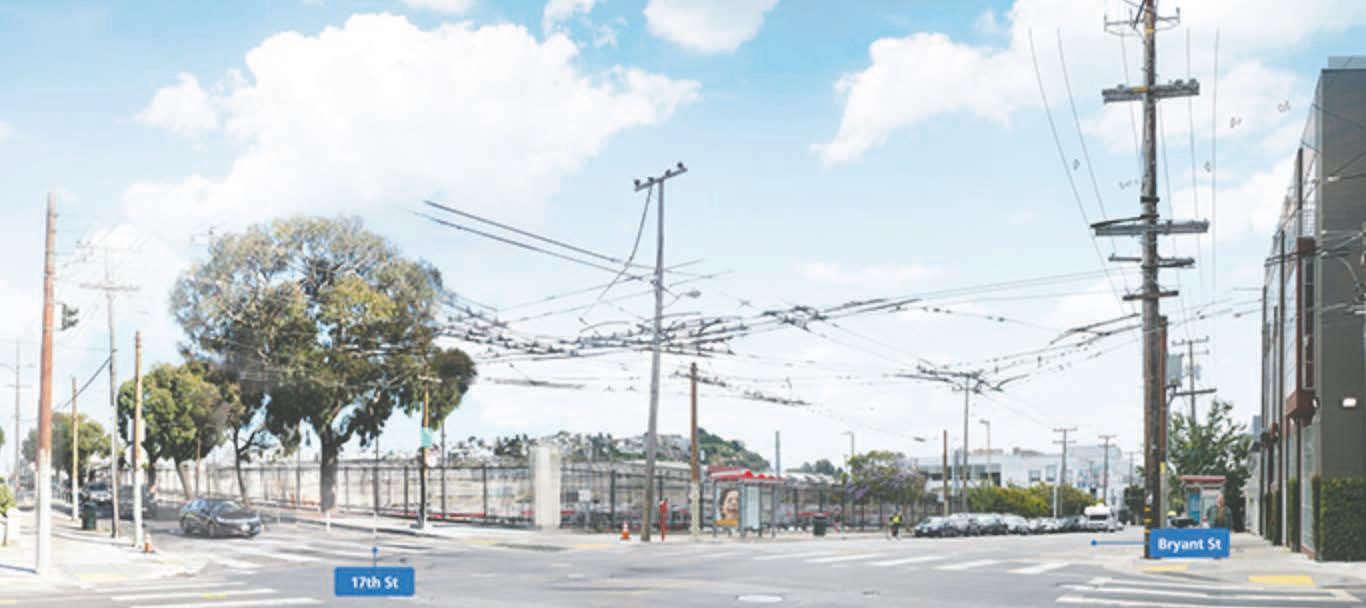
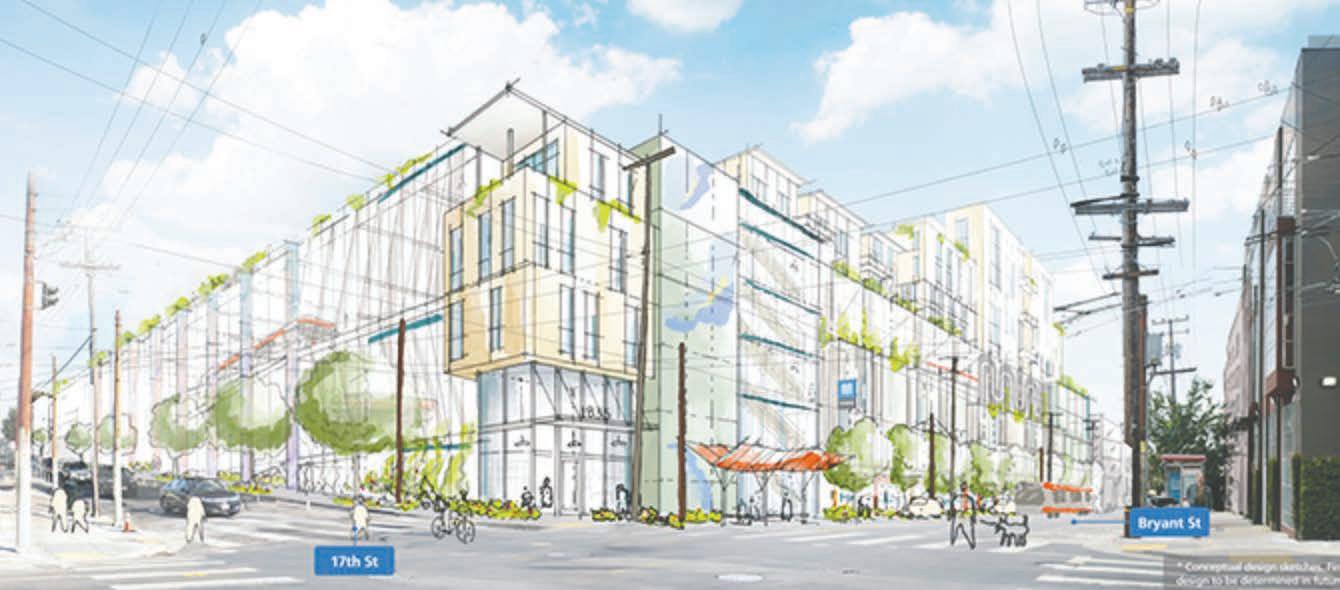


According to Kaslofsky, there’s tension around the amount of housing to be developed on the Yard and how that’ll affect the surrounding community. “With a site of almost four acres and hundreds of new residents, we want to know how Franklin Square Park and traffic will be affected. People do not want the housing to be extremely tall. They’re interested in having it fit the scale of other buildings in the neighborhood,” he said.
The housing complex’s size and the three-story bus facility has prompted questions about shadows the buildings
Yard. If we delay this project, we delay rebuilding other yards in the City,” said Hirji . “Youth heavily use transit to visit friends, travel to school, access health care, get to jobs, and get to entertainment like concerts or sports games. Many youth and teens in the City do not have a driver’s license or access to a vehicle. If there’s an issue that impedes this yard, that will disproportionately impact youth. Young people are in favor of environmentally friendly electric buses and other transit improvements. They are looking for less crowding and more routes, especially to underserved areas.”
Virtual Tuesday 2/2
History: 3.9 Collective’s Art of Research
3.9 Art Collective members discuss research’s role in their creative practices. Archives, libraries, museums and dynamic contemporary communities are resources and sources of knowledge. Panelists will talk about moving from engaged study and learning to interpretation and making. The 3.9 Art Collective is an association of African American artists, curators and art writers who live in San Francisco, working to draw attention to the City’s dwindling Black population. The Collective bears witness to this phenomenon and seeks to reverse it by highlighting the historical and ongoing presence of Black artists and creative expression in Black communities. They create and claim spaces to display their artwork; nurture young artists and develop educational programs for students; and write about and curate exhibitions to generate productive, cross-cultural dialogues. 7 to 8:15 p.m. Webinar presented by the San Francisco Public Library, Potrero Branch. For more information and to register: https://bit. ly/36g64xs
Virtual Wednesday 2/3
Science: “Living with a Star” The Sun makes life possible on our planet. Join Exploratorium astronomers and physicists for a conversation in Spanish and English with National Aeronautics and Space Administration experts about what we know about the Sun, what we hope to learn about it through the Parker Solar Probe mission visiting the Sun’s atmosphere, and the characteristics of space weather caused by the Sun. 4 to 6 p.m. Free. For more information: https://bit.ly/3pwrU7z
Virtual Wednesday 2/10
Society: Social Media + Future of Journalism
“Fighting the Disinformation Machine,” a Cal Performances’ Illuminations: “Fact or Fiction” livestreamed event presented in partnership with the University of California Berkeley Graduate School of Journalism,
features Dean Geeta Anand and Tristan Harris, former Google Design Ethicist and star of the Netflix documentary The Social Dilemma, in conversation about the movement to counter technology’s challenges to journalism. 7 p.m. Free, open to the public. For more information and to register: https://bit.ly/2YfVlyA
Virtual
Now through Thursday 2/11
Film: A Celebration of World Cinema For the 17th consecutive year, the California Film Institute presents a selection of global Oscar® submissions. Ninety-three countries submitted films for consideration in the 2021 Academy Awards® Best International Feature Film category. For Your Consideration is a rare opportunity to watch a selection of outstanding foreign films. All-access pass: $55 CFI members; $75 general public. Single tickets: $7 CFI members; $12 general public. To purchase tickets and for more information: https://bit. ly/2Mt6WaE
Virtual
Wednesday 2/3
Aging: “Reinventing Retirement”
From his 75+ interviews with retirees, Richard Haiduck, author of Shifting Gears: 50 Baby Boomers Share Their Meaningful Journeys in Retirement, will discuss stories of people who have discovered or rediscovered a new passion, ranging from the exotic to the mundane, happy to sad. 12:30 to 1:30 p.m. Free. Meeting via Zoom. For more information and to register: https://bit.ly/36b35pQ. Hosted by the Osher Lifelong Learning Institute (OLLI) at San Francisco State University; an OLLI account must be established to register for the session: https://bit.ly/2KpynBi
Virtual
Thursday 2/4
Holiday: Lunar New Year
Celebrate the Year of the Ox as poets Michael Warr and Chun Yu read works in English and Mandarin that reflect the essence of the New Year — vanquishing the past, embracing new beginnings, and venerating ancestors — while Aiqin Zhou demonstrates her skillful calligraphy by illustrating the poems. 7 to 8 p.m.
C��� �� ���� �� � ����������

We are livestreaming all Masses


$0 to $25. Presented by the Asian Arts Museum. Event link will be provided in confirmation email. To purchase tickets and for more information: https://bit. ly/2YdC4h5
Virtual
Tuesday 2/9
Finance: Small Business Tax Basics
Liz Hanley of Liz Is All Biz, Inc. will cover best practices in business bookkeeping, tax filing, estimated taxes, and entity types. Hosted by the Small Business Program at the San Francisco Lesbian Gay Bisexual Transgender Center. 1 to 2:30 p.m. Free. For more information and to register (required): https://bit.ly/3iK1yfE
Virtual
Thursday 2/11
Performance: Comedians & Commentary & Cynthia In this comedy show, comics perform while being interrupted, questioned, and heckled by other comics. A portion of the proceeds go to Black Lives Matter organizations addressing racial injustice or providing community services. 7:30 to 9:30 p.m. Free, with option to make a donation. To reserve your space and for more information: https://bit.ly/3oiv0uj
Virtual
Thursday 2/11
Cooking: Soul Food for my Soulmate
In honor of National Donor Day, Donor Network West presents a virtual cooking demonstration featuring celebrity chef Nikki Shaw. Chef Shaw will create a soul food dinner for two, joined by heart transplant recipient Frank Green III and his wife Bashana. Recipes will be provided in advance so attendees can cook alongside and
make a savory, healthy soul food meal that’s good for the heart and soul. 6 to 7 p.m. Free. To register and for more information: https://bit. ly/2YgbPXm
Virtual Saturday 2/13
Health: Learn to Meditate
This virtual session for beginners will introduce the benefits of meditation, which can help settle the body and mind amid the swirl of daily life. Sitting in a balanced posture creates a steady calm that, with training, can become the way you meet whatever arises. Wear loose, comfortable clothing and find a good place to sit, or lie down, during the session. 10:30 to 11:30 a.m. $0 to $25. Present by the San Francisco Zen Center and Asian Art Museum. To purchase tickets and for more information: https://bit. ly/2M3q7YZ
Online
Sundays 2/14, 2/21, 2/28
Audio Drama: “Books & Roses”
San Francisco theater company
Word for Word’s new audio drama podcast series Word for Wordcast continues with “Books & Roses” by Helen Oyeyemi, posted in three parts. “Books & Roses” is a fairy tale and a remarkable love story about Montserrat, a foundling left in a Catalonian chapel at the feet of Virgin de Montserrat. Her only possession is a key hanging on a golden chain around her neck, and a note. Cared for by the monks of the order, she grows up and finds work in a laundry, where she encounters Señora Lucy, a painter who also wears a key. Montserrat eventually discovers that she and Lucy are linked when
San Francisco Public Library


Author Chanel Miller in conversation March 16, 6 p.m.
Saturday
Sunday
Tuesday
Friday


she finds the lock that fits her key. Her reaction is bittersweet, “She’d carried the key to this place for so long and now that she was there she didn’t know where she was.” From Oyeyemi’s short story collection, What Is Not Yours is Not Yours, described as “flawless” by National Public Radio. For more information and how to listen: http://www.zspace.org/pod
Virtual
Thursday 2/18
Comedy: Lockdown Comedy Geduldig’s Kosher Comedy presents Lockdown Comedy every third Thursday of the month. February’s show features Jackie Hoffman (New York), Elvira Kurt (Toronto), Bernadette Luckett (San Francisco), Lisa Geduldig (from Flawrida), and Arline (Lisa’s mom).
6 p.m. $10 to $20. To purchase tickets and for more information: https://bit. ly/39fAK3J

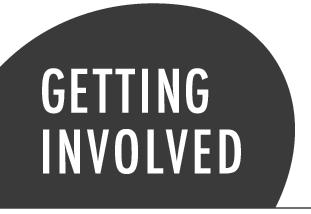
Green Benefit District

2021 GBD Board Election: Candidate registration open through 2/14; District property owners vote online 3/1 through 3/22. We are looking for qualified Potrero Hill tenants interested in running. Need more information about candidate qualifications, ballots or voting? Go to GreenBenefit.org
GBD Movie Night: Friday, 2/12, 5:00 pm. Online screening of William Whyte’s The Social Life of Small Urban Spaces, with guests panelists Robin Abad Ocubillo, Marcy Coburn, Patricia Fonseca, and Jason Kelley Johnson. Register at GreenBenefit.org
Potrero Boosters Neighborhood Association
Be in the know. Meet your neighbors. Make the Potrero a better place. We’re meeting virtually on the last Tuesday of each month at 7pm. Go to www. potreroboosters.org for details.
Starr King Open Space
For the latest on monthly volunteer days and montly meetings (open to the public). Please visit https://starrkingopenspace.org/meetings/ If you can, please donate to help keep Starr King Open Space open, accessible and well maintained for our neighbors. www.starrkingopenspace.org
First Saturdays in Dogpatch: A neighborhood-wide event held monthly Explore neighborhood shops, enjoy great food and drink, discover maker market at Center Hardware and 1234 Indiana Street, be inspired at gallery openings at Minnesota Street Project. All this and more when it is safe to gather again. Meantime, please visit LoveDogpatch.com
For a $200 annual fee your organization can be listed in Getting Involved. Contact production@potreroview.net
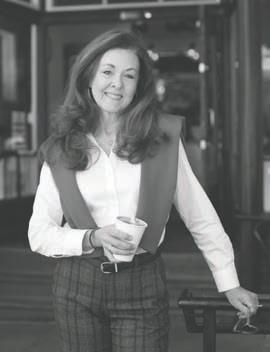





The District has devised a list of requirements that must be met for reopening to occur. These include accumulating sufficient Personal Protective Equipment (PPE) and cleaning supplies and modifying school interiors and facilities to allow for physical distancing and ease of sanitization. Students and their families need to be informed of proper COVID prevention measures; an outreach effort complicated by shelter-in-place.
Both the United Educators of San Francisco, which represents teachers, and the Service Employees International Union, on behalf of custodial staff, must be informed of and agree with reopening plans. So, too, must families.
“Some of the push back has to do with the fact that we went to purple all of a sudden,” said Darlene Martin, Starr King Elementary School principal. “Things seemed to be going along well, we were preparing to come back, and all of a sudden the counties are in the purple. How did that happen? And I think, for some people, going back into purple did not seem to be the right time for re-opening.”
A reason for a staggered approach to re-opening is that the District expects new complications to emerge after students and teachers return to the classroom.
“There is a lot of learning that goes along with how you’re doing this,” Martin said.
According to Principal Martin, while the first tier of the re-opening schedule is on hold, Starr King is
preparing to revive its campus on February 8th. Based on the original plan approved by the San Francisco Board of Education, Starr King would first resume in-person learning for its prekindergarten and part of its Special Education program, then bring back kindergartners, followed by a gradual re-introduction of other grades.
Teachers and support staff are also planning for the possibility that the remainder of the school year will be conducted remotely.
“We have no idea when in-person learning at the SFUSD will start,” said J.R. Eppler, whose son is a Daniel Webster Elementary School kindergartener. Families were initially informed that Daniel Webster would re-open after Starr King, but no date has been set.
According to Christina Quiroz, an arts educator who started working at Starr King in 1990 and at Daniel Webster seven years ago, the District is having all schools prepare to re-open, which has added to a workload already burdened by the demands of teaching in the midst of a pandemic. Quiroz volunteers to help coordinate and compile material packets for families.
“The schools really need it right now,” she said.
Her own materials list is extensive. Especially at the beginning of the semester, Quiroz spends hours collecting items, like colored pencils and construction paper, to assemble into art kits for families to pick up along with other supplies at scheduled times at Starr King and Daniel Webster.
“Not every child has access to the same kinds of environmental enrich-
ment in that they have the things they need to do art at home,” she said.
Teachers had to scramble last winter when the order came to stop in-person learning. “We found out that Friday and started reviewing things immediately,” Quiroz said. “Obviously, parents were calling,” wanting to know what to expect for the coming weeks.
By Monday plans were in place for synchronous classroom time, during which teachers and students participate in Zoom classes, as well as asynchronous classroom time, when students work independently on assignments with educators available as needed.
Last summer, teachers sought professional development opportunities to become proficient in programs like Seesaw, an app that allows teachers and students to post assignments, ask questions and interact with each other outside of email or Zoom.
Quiroz noted that some teachers have struggled more than others, but her colleagues have thrown themselves into the effort. Many educators exceed the number of hours they’re required by the District to be available to students online. She spends less time interacting directly with students but has increased her investment in class preparation.
“But that’s how teachers are,” she explained. Teachers go above and beyond for their students in the pandemic because “it’s a calling.”
School volunteers help distribute supplies. The Potrero Hill Recreation Center and Potrero Hill Neighborhood House (Nabe) have created hubs and





pods to provide students with greater levels of supervision and socialization opportunities. Starr King works with 826 Valencia, whose helpers offer two classes with extra support, conducted online, for writing assignments.
Hubs are organized by schools in partnership with community organizations. They provide places where students can access technology for remote learning and study and do homework with adult supervision, under strict COVID-safety guidelines. The Hub at the Nabe, for example, is staffed by internal and SFUSD employees, with computers and other supplies provided by the District.
Pods are informal, smaller, organized by families, though sometimes with assistance from nonprofits. “The children in a pod are essentially quarantining together,” Martin said.
The Rec Center operates somewhere between a pod and a Hub. With a more formal set up that has some District oversight, it primarily serves the children of essential workers.
While most school buildings are locked down, some administrators go to their offices to be available for those who may show up with questions or – as frequently happens to Principal Martin – needing help with the Chrome Book or Hot Spot that the District has provided their student.
According to Martin, some Starr King’s students don’t live in the District; the school had to track down addresses to mail students materials. They’ve also provided backpacks and even desks.
SCHOOLS continues on next page



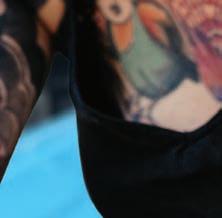


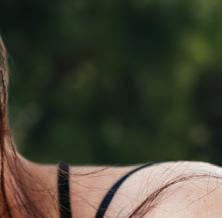
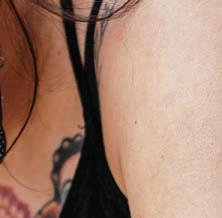


Quiroz prepares lists of needed supplies for parents and guardians, as well as guidelines and suggestions for how their children can participate in class and work on art at home without access to materials found in the classroom.
“A really great thing about art is that you really don’t need many things to do it”, she said, though younger students struggle to accept that they can draw just as well with a pencil or notepaper as with crayons and construction paper. “We’ve had to make up a lot of things as we go.”
“The teachers and administration have done as good a job as possible at trying to make this a good school year for the kindergartners,” said Eppler. “They have a lot of challenges, and I understand that they are constantly adjusting as plans for school reopening and other things come down the pipeline. They’ve done a good job of being adaptable and trying to ensure that education continues, regardless of the situation.”
Eppler considers his family lucky because his son participates in online classes at Potrero Kids. Potrero Kids, privately-operated by the Potrero Residents Education Fund, located on the Daniel Webster campus, enables kindergartners to maintain some of the social and environmental aspects of inperson learning. The preschool offers classroom space, a teacher and support staff who facilitate the students’ use of Zoom and other programs as they attend classes taught remotely by Daniel Webster educators. Most of the kids in Eppler’s son’s kindergarten class are physically elsewhere, with a handful
with him at Potrero Kids, with an opportunity to establish the long-term friendships that children usually enjoy.
“I can’t tell you how fortunate my wife and I think that we are,” Eppler said, “that we had a group like PREFund in the neighborhood that is operating preschools and that they were able to accommodate some of the preschoolers that were moving into kindergarten by giving them an option for in-person support.”
In addition to helping socialize and ease the transition to eventual in-person learning, the option makes it much easier for parents to follow a typical work schedule at a time when outside childcare options are extremely limited.
“We have been fortunate that his daily schedule, with the exception of a couple of months right at the beginning of the pandemic, has not been disrupted from what it was or what it will be when full-time, in-person learning begins again,” said Eppler.
Not every family, however, is able to take advantage of Hubs and pods. Jessica’s son, Daniel, a kindergartner in Starr King’s Mandarin-immersion program, has yet to set foot inside the school. Neither has Jessica.
“I’m just going to say, I love Starr King, having never been on campus myself, having never met anyone there, face to face,” Jessica said. “The teachers have been phenomenal. They communicate so well with us and they understand that kindergartners can’t be on Zoom all day.”
Jessica and her husband have modified their schedules to take turns watching Daniel. Jessica is in graduate school and has access to daycare services for Daniel’s two-year-old sister.
Her in-laws live nearby and watch the children as well. Even so, Jessica has come close to quitting her doctoral program, “We have a huge support system that we’re able to make work really well. And it’s still really tough. I don’t know what I’m going to do when my semester starts.”
For the past year adult caretakers have had to take on many of the roles that teachers perform. “They have homework assignments and it’s hellacious to get through the homework,” said Jessica. “It really is, because I have things to do, so I’m trying to rush him through it, but, poor thing! He’s a kindergartner, he can’t really do it that fast. I’m trying to do my own homework, but he has to do his homework first. It can be very frustrating.”
The story is different for many of the City’s private schools. Red Bridge, a kindergarten through eighth grade school, opened South-of-Market last fall. Director and founder, Orly Friedman, explained that the school decided to begin classes in September in part because they recognized that the pandemic would offer an opportunity to showcase the school’s student-initiated learning model.
“Building student agency really is the most important skill that a school can provide these days,” she said.
The first shelter-in-place order was issued in the middle of Red Bridge’s admissions process, which complicated the school’s opening. “I think I had maybe a day when I thought maybe we should wait a year, but ultimately realized that this school was more useful and important now than ever,” said Friedman. “It’s really what allows students to be adaptable when unpredictable events happen. The
students have a sense of agency if they do have to work remotely. We decided to go ahead and open, knowing that we would have to make a lot of back up plans and contingencies.”
Red Bridge, which has just a dozen students, has been able to hold inperson classes. Friedman explained that the small student population and facilities’ size allowed them to secure permission to open from the San Francisco Department of Public Health. The school has attracted East Bay families as a result. Other than learning, everything else is handled remotely, including parent-teacher meetings. Friedman believes that the school has been hampered in its attempt to build a sense of community that’s part of its foundational goals; families haven’t been able to meet one another and parents don’t get to spend time on campus.
Red Bridge expects to double its student body next year and is developing plans to accommodate more pupils and staff.
Friends of Potrero Hill, located in Dogpatch, also continues to offer inperson classes. The preschool initially suspended operations in March but re-opened at the beginning of June. Its director, Monica Leitch, explained that to be able to serve families, Friends has had to modify its programs to accommodate strict COVID guidelines established by the City.
“We have to be in two distinct groups, have fewer children, and there are a lot of cleaning protocols,” said Leitch. Staff and kids are regularly tested for the novel coronavirus.
According to Leitch, Friends,
SCHOOLS continues on page 12
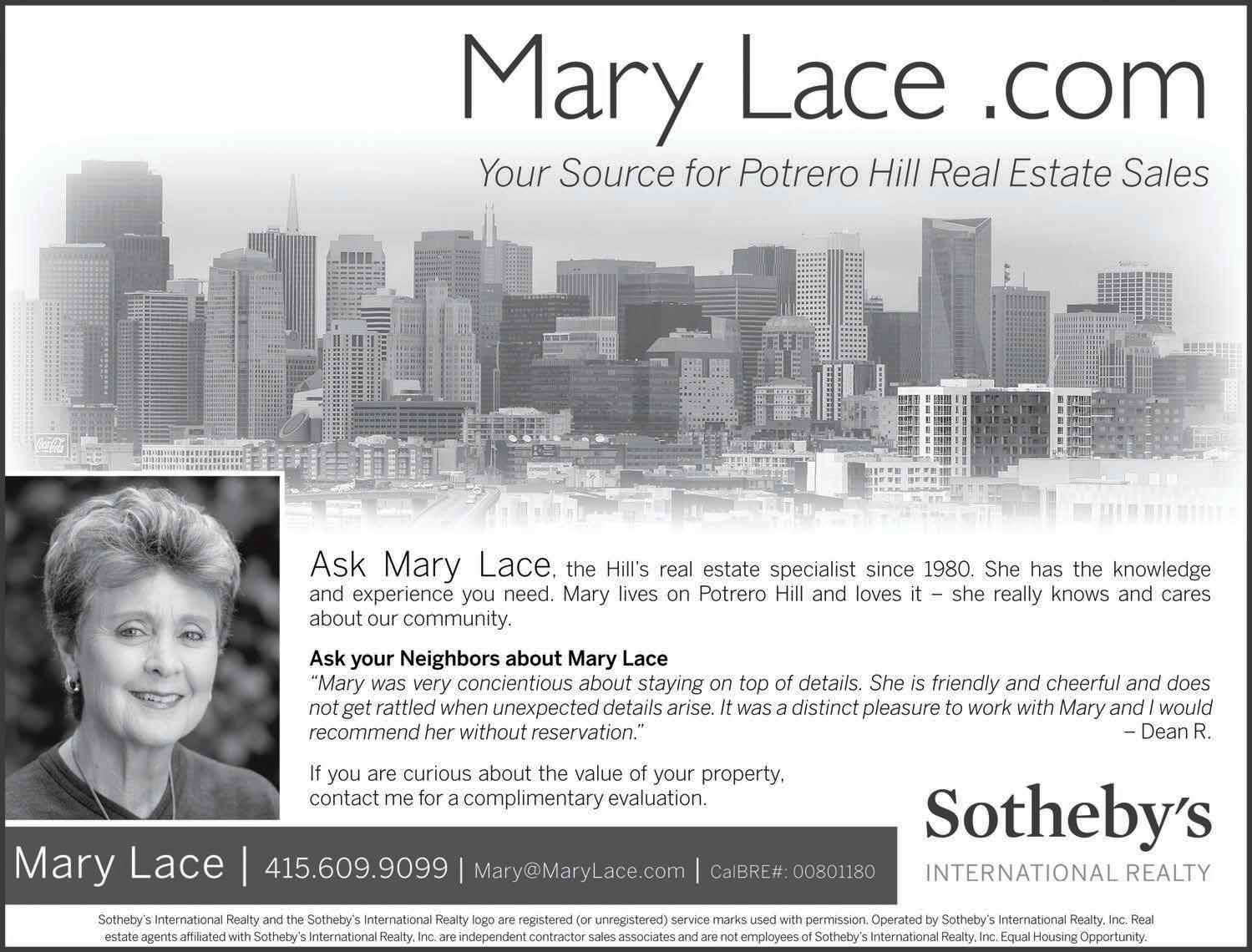

Ronald Clark Gempel
November 26th, 1942 — December 27th, 2020
Ron’s celebrity was cemented with the 1977 opening of the iconic, DAILY SCOOP restaurant, in Potrero Hill and he later opened CITY SALAD. Ron ran “The Scoop,” Ice Cream Parlour, for more than 20 years.
After caring for his Mother in Florida, Ron moved to Carrabelle, where he opened the CARRABELLE JUNCTION, soda fountain and cafe, which became a destination restaurant for families and travelers along the Gulf coast. It was said that; “Ron
for the last 15 years.
Born in Cleveland, raised in West Palm Beach, Ron was a true Renaissance man, who died, as he lived, intentionally, and as the producer of his own “movie.” Ron studied in the ISLS (Interdisciplinary Studies of Letters and Science) at Chabot Community College and attended San Francisco State University in the early 1970’s.
Ron was infamous for his Panama Hats, cigars, Hawaiian shirts and his 1965 Ford Falcon! Ron was a romantic, a prolific poet, a collector of nostalgia, a keen observer of human nature, and cunningly sarcastic. He was one of the last of the timeless gentlemen, who lived with aplomb and grace.
Ron is survived by; his son, Michael Gempel, (spouse, Lucy Reedy) his two brothers, Norm Gempel, (spouse, Judy Moody-Gempel), David Gempel, and devoted friend, Karen Cox-Dennis.
Ron’s life celebration at Carrabelle Beach will be announced in the coming weeks. In the Spring there will be ash scattering under The Golden Gate Bridge. Please feel free to make a donation to Big Bend Hospice of North

Permanente continues its longstanding commitment to environmental sustainability and efforts to help slow climate change.
To reach this milestone we improved energy efficiency in our buildings, installed on-site solar power, purchased new renewable energy generation, and invested in carbon offsets with strong health benefits to counter unavoidable emissions. This move to carbon neutrality eliminates our annual carbon footprint and helps improve conditions for healthier communities. Learn more at: kp.org/green
California are welcome. Individuals are asked to share their current location privately with a facilitator for safety purposes…first name and name of their pet with the group. We ask that one person speak at a time. Then other people can offer support. Participants allow each other equal time to talk,” said Phillips.
Madfes said the group includes individuals who have lost companion or service animals due to death or because they had to rehome it.
Phillips and Madfes began attending the group in 2017, then led by University of San Francisco (USF) professor, Dr. Cori Bussolari, a specialist in pediatric health psychology and bereavement. The group was originally created by Dr. Betty Carmack, USF professor emerita in nursing and author of Grieving the Death of a Pet Madfes and Phillips are former students of Bussolari.
“I love that there is this free service and a space to talk about grief over losing a pet,” said Phillips. “Shaina and I shadowed Dr. Bussolari for two years prior to taking over the group. This time helped me better understand how to create a safe space to hold people’s loss and emotions.”
The COVID-19 pandemic has changed experiences regarding pet loss. “COVID-19 protocols at veterinary clinics may make it difficult for a person to be with an animal when the animal is ailing and/or being euthanized. In addition, individuals who are working outside the home more than usual may feel guilt and sadness due to being less present for their animals at the end of their lives. Those folks who are working inside the home now may experience a great sense of loss due to the increased physical closeness with their animals. For all people experiencing loss during this time, grief may be more challenging…due to increased isolation and less access to coping strategies like going to the gym, dinners with friends, or seeing family,” said Madfes.
“Our animal companions are members of our family. For older people, a pet has seen us through challenging and difficult times, like an illness or divorce or raising children. Pets are the historians of our lives,” said Carmack. “To lose an animal during this time, understandably, can intensify the grief. The grief you experience after a pet is gone can be even more intense than the grief you feel when you lose a friend or family member. It’s very individualized and each person’s journey of grief is different. If it’s hard for you to get through a day without crying, know that’s not unusual. Take that time for yourself.”
Carmack added that it can be important to mark one’s beloved animal companion, by performing a ritual or creating a memorial, such as a scrapbook, journal, or lighting a candle. “It also might be helpful to plant a tree, bush, or other plant, or make a donation in your animal’s honor. You can also send out a memorial notice to friends and family or post a memorial on social media,” she said.
The San Francisco Parks Alliance offers a way to honor a pet with a plaque through its Commemorative Bench Program. “There are not specific areas in parks dedicated to pets. The locations are driven by donors’ preference for a location,” said Paula Martin,
Alliance bench program manager.
Martin said the Music Concourse in Golden Gate Park, Alta Plaza Park, Bernal Heights Park and Precita Park are popular spots for memorial benches. “First, a pet owner selects two or three areas meaningful to them. Then I research the availability of the spot. San Francisco Rec and Parks confirms availability and completely restores the bench. RPD carpenters repair it, clean it, and remove graffiti,” said Martin.
According to Martin, a commemorative bench requires a $6,000 donation for a 10-year term, five lines of text with 25 characters. The letters can be in different languages and include images like a heart or the silhouette of a dog breed.
“These memorials are very personal and meaningful to the people that select them. For example, there’s a bench near Spreckels Lake that memorializes Ann, an owner, and Buster, her dog. Ann and Buster used to walk there every day. The bench is a place that everyone who knew her or Buster can visit and remember them,” said Martin.
Pets can be honored by contacting professionals who knew the animal, said Michelle Barrera, general manager of Pet Camp, a daycare and overnight boarding facility with two San Francisco locations.
“Know that you are not alone, and there’s a whole group of people who knew and loved your pet too...are grieving along with you and wish you the best,” said Barrera.
According to Barrera, a challenging aspect of losing a pet can be helping other animals deal with the loss. “I have a big, beautiful, black and white pit bull named Magoo. For the first years of his life, he lived with my older cat, Nina. When she died, he lost his support,” said Barrera.
Barrera said Magoo was more wary after Nina’s death. “She provided him with comfort, so I stepped in to reassure him and create that sense of consistency,” said Barrera. “One thing that I have found that works is to stay positive around them. Continue the routines you had before, like walking them or feeding them at a regular time. Gradually they will regain that trust and rebuild their confidence.”
SCHOOLS from page 11
which has served the community since 1996, has been hard hit by the pandemic. To stay open, its had to alter classroom layouts, invest in supplies and equipment and increase the ratio of staff to students, with dire impacts on the nonprofit’s coffers.
“It’s been tough,” Leitch said. “Our board of directors has been very hard working. It’s a little bit of a different job than what they originally signed up for!” The school is currently organizing a fundraiser.
Everyone who spoke with the View expressed concerns about the impact shelter-in-place is having on children’s emotional growth and social development. Jessica sends emails to Daniel’s teacher daily to check on his progress. “I am concerned about him being able to hit the benchmarks,” she said, “but they’re more concerned with the social aspects than the academic aspects. He’s in isolation. He doesn’t have kids to play with.”
SCHOOLS from previous page
Like many caretakers, Jessica has had to take on the role of teacher and playmate. She’s invested in a pair of roller skates to accompany Daniel while he rides his tricycle.
There’s also deep concern about impacts on academic achievement. One eighth grader, who is in the gifted program at his school, nearly failed his courses last semester because he struggled to perform tasks in a timely manner outside a classroom structure. His parents both work in healthcare and can’t be home to supervise him. The family hopes they’ve been able to help their son make the necessary adjustments to do better this semester.
Starr King’s Principal Martin acknowledges that the impact is real and has happened across the board. “We’re not making the gains we would have made in normal years, but students aren’t falling way behind.” “There are some students, who in some ways are doing better. We have some students who can be hyper-vigilant, because maybe they’ve experienced trauma so the classroom can be challenging for them because there’s a lot of movement in the classroom and that makes them very uncomfortable. Where their home is safe, they’re focused on the work because there’s not all this other stuff going on around. That’s a small number of students. There are an even smaller number of students who we still aren’t getting online, but those were the students who weren’t showing up during the year, and that’s despite our best efforts. There’s lots of measures that we’re taking to make sure that people are able to function at home.”
Starr King is distributing “genius kits”, organized with local partners, which include hands-on tools organized to be used at different times as on-line lessons progress.
Students and teachers alike are more familiar with online and computer technologies than they were a year ago because they’ve had to be, skills that’ll continue to serve them in the future.
After the pandemic ends Martin doesn’t think her school will fully return to the way it previously operated. “We can still reconceptualize homework so it’s not, ‘Here’s a sheet. Go do your ABC’s and come back’,” said Martin. “It can be, ‘Here’s a kit. Take out this part of your kit today and struggle with the problem that’s in there. Really think about it and move things around and come back the next day with your understanding.’”
“There’s a lot of good things about our online resources that we understand now. I mean, some of my teachers used Google Classroom before—or Seesaw—but now, they’re all using something. So, they’ve learned. This is a great way to begin. We’re starting [online] student portfolios and having student presentations. So, we’re having to use all of these tools, which we will continue to use to some degree or another, when we are back on site.”
“Like any family, we look forward to going back to what we used to consider normal schooling,” said Eppler. “We’re hopeful that the School District will figure out how to do that in a timely manner.”



YOUTH



“New Year’s Still Life” by West Raade eight, a Sunnyside Elementary School student who lives on Vermont Street. The piece was inspired by Andy Goldsworthy’s Woodline sculpture.

CREATIVE YOUTHS! The View invites those under 18 to submit any creative work suitable for publication, including drawings, short stories (fewer than 150 words), photographs, comic strips, jokes, before the 20th of each month. Winning entries will receive a $20 prize. Please send submissions to editor@potreroview.net

Muir Beach Studio and House
Walking distance to the beach, with the crashing waves visible and audible. No need to interact with anyone but your lovely selves. And we have plenty of toilet paper!
Studio: Cozy studio comfortable for two-people. Includes kitchenette and private patio with views of the crashing waves. $175/night plus cleaning fee, two-night minimum. Editor@potreroview.net or 415.643.9578.
House: Three bedrooms, two full baths, with deck with views of the crashing waves. $300/night plus cleaning fee, three-night minimum. Editor@ potreroview.net or 415.643.9578.
Legal Notices
The View now accepts legal notices. Please contact: production@ potreroview.net; 415.643.9578.
Subscription Salespeople Wanted
Minimum wage, intermittent work. Editor@potreroview.net
Freelance Writers Wanted
Modest pay, interesting assignments. Contact: editor@potreroview.net
Got something to sell? Have a service to provide? Each classified ad is $25 for up to 200 characters. www.potreroview.net/advertise
PUBLISHER’S VIEW from page 2
Small businesses, crushed by forced closures, should be granted a two-year tax holiday; sales and property taxes waived for entities with 100 or fewer employees and annual revenues of less than $10 million. If we can give Twitter a tax break, we can do the same for Frames on 3rd, Long Bridge Pizza, and Farley’s.
As San Francisco morphs into whatever personality we adopt next, our municipal government should thoroughly scrub its budget and personnel. The whiff of corruption wafts throughout City Hall, as well as the San Francisco Departments of Building Inspection and Public Works and Public Utilities Commission. Dishonest behavior is more easily hidden in the dark. With sufficient resources, the new owners of the Marina Times and San Francisco Examiner – alongside the San Francisco Chronicle, View, and other media – could reinvigorate San Francisco’s press corps, helping to shine antiseptic light on the shadowy corners of power. Support your local newspaper.
BECOME
The Mayor should deploy bottomup, zero-based, or other deep-dive budgeting strategies to craft the government we need now and in the future. The school and college boards, institutions that’ve demonstrated long term structural governance weaknesses, should be fundamentally reformed, or even eliminated.
Many more dogs will inhabit San Francisco post-pandemic, companions for the lonely. With them is increased demand for parks and open spaces, intensifying chronic human-dog conflict. It’s time to fully enforce collection of licensing fees, which a small fraction of animal stewards presently pay, and use the associated revenues to develop engaging, clean, dog-only parks. Many leash holders avoid dedicated dog parks because of their stark, smelly, surfaces. These should be replaced with play areas modeled after Pet Camp’s Savannah Back Country Adventure, featuring well-maintained trees, bridges, and other animal entertainment. Let kids and dogs roam free, without bumping into one another.
A previous pandemic, acquired immunodeficiency syndrome, or AIDS,
APPLICATIONS DUE FEBRUARY 26, 2021
The Transbay Joint Powers Authority (TJPA) is soliciting applications from Bay Area residents to serve on the TJPA Citizens Advisory Committee (CAC) to help shape the discussion in the development of Phase 2 of the Transbay Program and provide input in the operation of the Salesforce Transit Center and rooftop park. The Phase 2 project includes the Downtown Rail Extension (DTX), which will connect Caltrain’s commuter rail service and the California High-Speed Rail Authority’s statewide system to downtown San Francisco. Past CAC members have contributed to the successful planning, development and construction of Phase 1 of the Transbay Program, which includes the Salesforce Transit Center and the Salesforce rooftop park.
The TJPA seeks to appoint Committee members that represent the diversity of the Bay Area. There are seven full-term and one half-term seats available representing the following constituencies: Daily Caltrain Rider into San Francisco, Daily AC Transit Rider into San Francisco, Daily MUNI Rider on a line that serves the Transit Center, Member of the Citywide (SF) business community, Disabled Advocate, San Francisco based Transit Advocate, Regional Transit Advocate and Representative from Labor.
CAC full-terms are for a period of two-years and each member is eligible to serve a maximum of three consecutive terms. The TJPA CAC meets on the second Tuesday of the month from 5:30 PM to 7:30 PM. Due to the Stay Safer at Home order, meetings are currently held remotely. Meetings are normally eld at t e T A o ce at 425 Mission Street, Suite 250, San Francisco, CA. Consistent attendance is required.
Applicants are encouraged to apply for all seats listed on the application that they qualify for. If you are interested in being considered, please submit an application to the TJPA via e-mail at cac@tjpa.org or y mail: 425 Mission Street, Suite 250, San Francisco, CA 94105. Applications are a aila le on the TJPA website at https://www.tjpa.org/tjpa/cac/cacrecruitment and are due February 26, 2021.
ultimately took the lives of more than 20,000 San Franciscans, most of them gay men, a loss that bludgeoned a future before it could emerge. COVID deaths have been a fraction of that amount, with injuries mostly visited on our psyche, culture, health care system, and economy. If we can survive AIDS –and the 1918 influenza wave that killed more than 3,500 people – we can do so again, hopefully changed for the better.
SHORT CUTS from page 2
Street between Berry and Channel streets in the northbound and southbound directions. T-Third Muni Metro service between Sunnydale and Embarcadero Station resumed under Phase One of a plan to improve T-Third rail performance at a point where a bottleneck causes systemwide delays. Phase One allows northbound traffic on the Fourth Street Bridge; the northbound transit lane has been installed within a left turn pocket at Fourth and Berry, prohibiting left turns from Fourth Street onto the 200 block of Berry. If northbound traffic causes delays to the T-Third, Phase Two will be triggered, in which a full northbound temporary transit lane would be installed between Channel and Berry streets, northbound traffic would be prohibited on the Fourth Street Bridge, turn restrictions implemented at Fourth and Channel to prevent vehicles from entering the northbound transit lane from Channel Street, and Fourth Street traffic would be required to turn left or right onto Channel. In another alteration from the original plan, southbound left turns from Fourth Street onto the 100 block of Berry Street are allowed from a newly installed Left-Turn Only lane. General traffic heading south over the Fourth Street Bridge must use the curbside lane. The southbound lane with the streetcar tracks has become dedicated to transit and taxis. Modifications to the original proposal reported in The View’s January issue were based on significant feedback from community members.
In 2020 San Francisco’s office market had its weakest year in at


least three decades, as the coronavirus pandemic brought business expansion to a near standstill. New leasing activity plunged 71 percent from 2019, according to real estate brokerage Cushman & Wakefield. At 2.2 million square feet, down from 7.7 million, it’s the lowest level since the 1990s. The public health crises destroyed a nearly decade-long real estate boom, forcing office workers to stay home and emptying once-bustling Downtown streets. The biggest 2020 lease was signed by Vir, a biotech company researching COVID-19, which took 133,896 square feet at Dropbox’s 1800 Owens Street headquarters. The artificial intelligence nonprofit OpenAI expanded to 96,000 square feet at 575 Florida Street. Office projects under construction, which in recent years were often fully leased before being completed, saw no tenancies signed last year. Brookfield Properties’ partially built office tower at the 5M project and its Pier 70 development are still seeking tenants.
According to the Public Advocates Office at the California Public Utilities Commission, Pacific Gas and Electric Company’s customers can expected double-digit rate increases this year. All-in, Cal Advocates predict that electricity prices for residential clients will reach 26.7 cents per kilowatt-hour by the end of 2021, a 16 percent jump since last October. Average rates for all customers will hit 22.55 cents per kwh, a 15 percent rise. As a result, San Francisco households will pay $14.60 more a month on average this summer, with a $37.05 monthly hit in hotter places, such as Fresno. Sacramento Municipal Utility District’s rate are roughly one-third less than PG&E’s. It’s yet another warning signal that the investor-owned utility isn’t the right institution to be powering our hopes and dreams. Rapidly rising rates during a period in which all-electric cars and homes are the solution du jour to a changing climate will trigger adverse economic consequences, including reinforcing energy and income inequities. Time for policy makers to wake up and smell the future.
SHORT CUTS from previous page
Distracted
As we sit staring at the dumbing glow of our “smart” phones what’re we not paying attention to? A great deal, no doubt, during shelter-in-place, including furtive political lobbying in the darkened halls of Sacramento, City Hall, and elsewhere during a period when public access is severely limited, by both COVID and Trump-prompted heightened security. Who, exactly, are our politicians talking to these days, and whom are they not?
Title Transfer Correction
In December, the University of California, San Francisco and San Francisco Unified School District signed a Letter of Intent (LOI) on the transfer of Mission Bay South Block 14. The agreement marks a critical but intermediary milestone toward construction of a public elementary school in Mission Bay. The View incorrectly reported in last month’s issue that transfer had been completed; the actual land transfer is anticipated by the end of this year.
Food Management
Tanis Crosby is the San FranciscoMarin Food Bank’s new executive director, following last month’s retirement of Paul Ash. Ash had planned to retire last year, but due to the unprecedented events of 2020 agreed to stay on to help the Food Bank adapt and respond. Ash will serve
as an advisor and consultant to the Food Bank as needed. “During Paul’s three decades of leadership at the Food Bank, the organization’s food distribution increased from just three million pounds to 67 million pounds, ensuring hundreds of thousands of Bay Area families had access to food,” said Scott Brubaker, the Food Bank’s Board Chair. “We are grateful for Paul’s commitment to the Food Bank and the people of San Francisco and Marin. The full extent of his impact is truly immeasurable; he leaves behind an enduring legacy.” Crosby previously served as chief executive officer of the combined YWCA Silicon Valley and YWCA San Francisco & Marin.
AGNELLO FARMS from page 4
steaks, roasts, lamb chops, and other specialty cuts, Pavloff is including his favorite local products as add-ons, such as Tomales Farmstead cheeses and La Colina Ranch olive oil. He’ll offer his own spice blends, charcuterie items, jams, and other condiments in the coming months.
“The subscription boxes are also a discovery service because I’m including family recipes and giving suggestions on how to use lesser-known cuts of meat,” he said. “The meat will be brought directly to customers, without them having to navigate the grocery store. We make it easier for people to get a quality product.”
Ease of delivery is particularly relevant while the pandemic rages on, during which going to the grocery store or butcher has an added layer of stress.

The boxes are delivered directly to Bay Area residents once a month. Customers can choose whether they want beef, lamb, or a combination, as well as the amount. Ten pounds feeds two to four people for a month; 20 pounds, four to six people.
Pavloff, also a building contractor, is constructing a meat shop at 1700 20th, down the street from the house where his grandfather and father grew up.
“It’s a property I purchased a few years ago within the area my family still lives,” he said. “I wanted to bring meat from my farm in Petaluma to serve this tight-knit community.”
The shop is set to open this spring and will serve as a space where customers can pick-up their meat boxes and other locally made pantry items.
Agnello Farms’ beef is being featured at Daily Driver’s Friday Night Burger popup, available from 5 to 7 p.m. every Friday in Dogpatch.
Once the pandemic has subsided, Pavloff plans to start hosting farm parties again, as his family has done for years.
To find out more about Agnello Farms and to order a meat subscription box, visit www.agnellofarms.com




























































